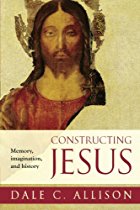They say there is none so deaf as he who will not hear, and when it comes to Christ myth arguments there are biblical scholars who, despite their public protestations otherwise, regularly demonstrate an apparent inability to engage seriously with mythicist arguments.
Once again a biblical scholar who has been informed on his blog why he is mistaken for assuming (he has apparently never read Doherty’s most comprehensive book) that Doherty is fallaciously taking a late second-century text and using it as evidence for the matrix of emerging Christian thought in the first century. Despite being informed of his error, he continues to repeat his claim that the Ascension of Isaiah is a late document and therefore without the relevance that Earl Doherty ascribes to it.
I am a little surprised that even a doctor and professor should repeatedly publicly advertize his ignorance of the facts and the scholarship surrounding the Ascension of Isaiah.
I would like to recommend Doherty’s book as containing an excellent introduction to the Ascension of Isaiah in a 4000 plus word section from pages 119 to 126. Of course much of this is a detailed examination of the earliest layer of the text (first century), but there is also an examination of the history, origins and rescensions of the various manuscripts and layers of text within each.
This section will inform readers that the Ascension of Isaiah document we have today has come to us in three main manuscript lines, Latin, Ethiopic and Slavonic. Readers will learn something of the variations among these lines, the backgrounds to their various redactions etc.
They will also learn that the earliest document was probably a Jewish sectarian tract that was later the subject of redactions by later Christians.
They may further be interested to be informed of Michael Knibb’s case (Old Testament Pseudepigrapha, v.2, p. 143-176) for the earlier Jewish work behind the Ascension being dated to the end of the first century — given the time needed for the Nero redivivus myth to gain traction. Continue reading “Does the Ascension of Isaiah have any potential relevance for the study of origins of the Christ myth?”

 Having just read the first chapter of
Having just read the first chapter of